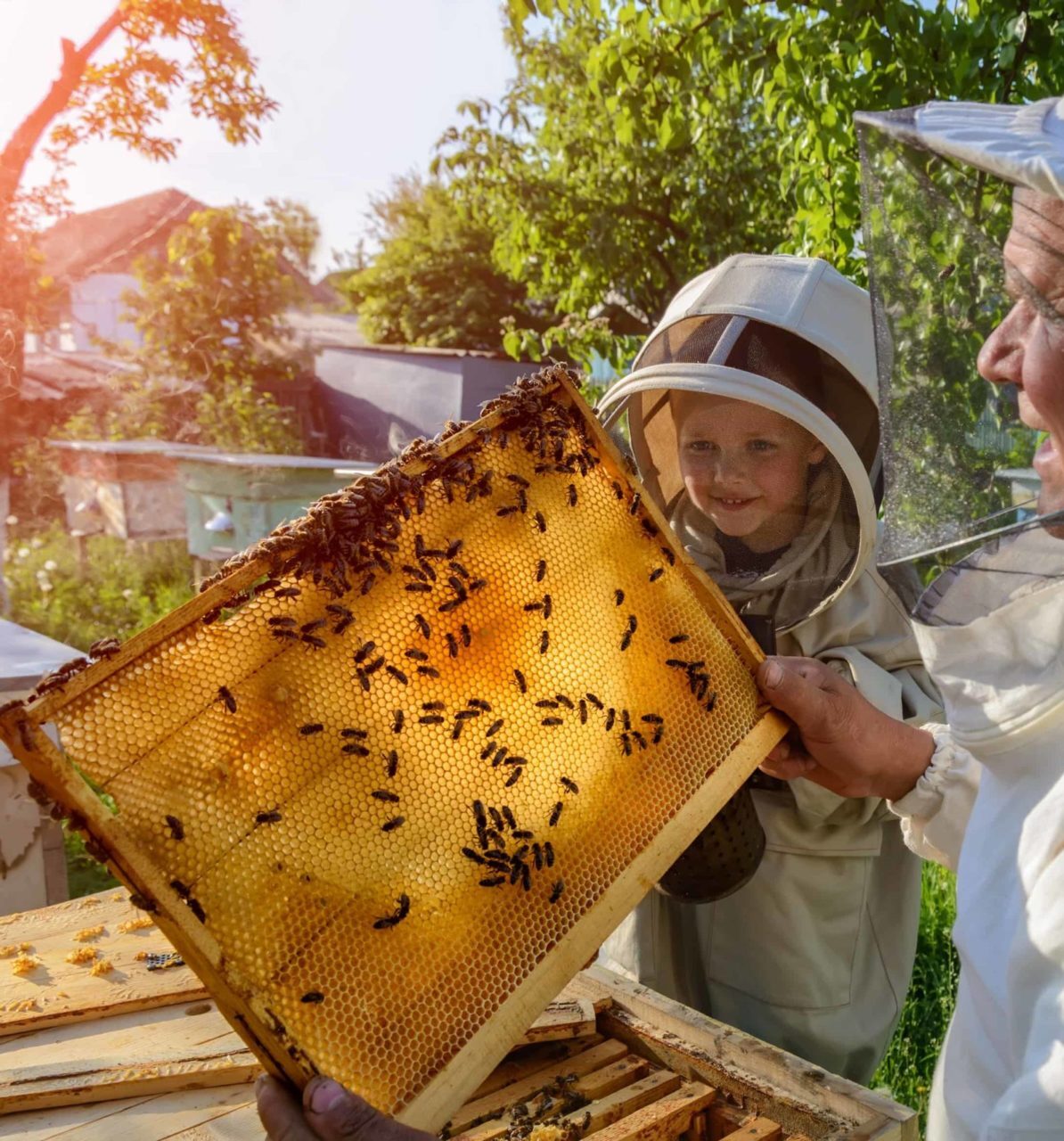The importance of beekeeper surveillance in early detection
As part of the National Bee Pest Surveillance Program (NBPSP), biosecurity officers routinely conduct surveillance activities at high-risk ports around Australia. The NBPSP was a crucial part of the recent detection of varroa mite in New South Wales, with the pest first detected at the Port of Newcastle sentinel hives.
Similarly, the National Bee Biosecurity Program (NBBP) inspects hives at major pollination events to check for established and exotic bee pests and diseases. With over 29,000 registered beekeepers, approximately 668,000 hives and at least 16 government surveillance staff across the two programs, effective biosecurity is a shared responsibility.
The Federal Government is responsible for international pre-border and at the border biosecurity activities, and State governments look after interstate . This is supported beekeepers who conduct post-border surveillance through the routine checking of hives for exotic pests and diseases. The collaborative approach increases the chances of early detection and minimises the risk of bee pests and disease spreading further.
Plant Health Australia interviewed Dave Schlipalius, Queensland (QLD) Bee Biosecurity Office (BBO) on practical bee surveillance methods.
It is difficult to see external pests by looking at bees/frames just with the naked eye, so targeted surveillance methods are required for the detection of pests such as varroa mite, tropilaelaps mites and braula fly.
The Australian Honey Bee Industry Biosecurity Code of Practice requires all beekeepers to check their hives (a minimum of one hive per apiary) at least twice per year for external pests. Surveillance activities such as sugar shaking, alcohol washing or drone uncapping are recommended.
What can beekeepers do?
“The most useful test is the one that is actually done” says QLD BBO Dave. The tests are much more likely to detect varroa mites within an area if they are performed regularly and on multiple hives across different apiaries in a region. In Queensland, beekeepers are asked to test their hives whenever they do a general hive check, preferably each group of hives should be tested up to four times a year.
Reporting your results can support proof of freedom claims in your state or territory. In Queensland beekeepers can report their results through the Bee123 app. Contact your local BBO to find out what apps or online forms are available within your state or territory.
Which method do you prefer and why?
A combination of alcohol washing and drone/worker brood uncapping is preferred as they are complimentary tests.
Both alcohol wash and sugar shake tests are used to detect mites on adult bees. Both are relatively easy to do by beekeepers at many different levels of skill and experience and can be performed with simple homemade equipment. However, alcohol washing is preferred over sugar shaking for several reasons:
- alcohol washing is more likely to detect varroa mites when very low mite numbers are present in the hive
- it works over a greater range of environmental conditions, i.e., temperature and humidity
- there are less constraints on using these two destructive sampling methods over autumn, winter, and early spring in sub-tropical and tropical environments compared to temperate climates, where colony reproduction rates can be quite low in cooler climates of the southern states.
Testing is more sensitive when combined with drone/worker brood uncapping tests for mites in capped brood. Most of the mites in a low-level hive infestation will be found in capped brood and will not be easily detected by either alcohol wash or sugar shake tests. Varroa mites also prefer to develop in drone brood. Brood uncapping only requires a comb scratcher and can be routinely performed during a hive inspection.
Drone or worker brood uncapping and alcohol wash tests on the same hive increases the chance of finding varroa mites, as the tests target different life stages of bees and varroa mites.
What kind of feedback have you received from beekeepers about these surveillance methods?
Feedback indicates that beekeepers find alcohol washing relatively easy to do with some beekeepers using it routinely, even before the recent varroa mite detection in New South Wales. Some beekeepers are reluctant to kill bees or do not currently have access to the equipment required, however many are willing to learn how to perform it.
To find out how to perform an alcohol wash or drone uncapping contact the BBO in your state or territory.
For further resources on bee biosecurity see below:
Good bee biosecurity practices include preventative measures designed to reduce the introduction and spread of exotic bee pests and diseases. All beekeepers have a key role to play in protecting the Australian honeybee industry.
If you suspect the presence of exotic pests such as varroa mites, tropilaelaps mites, or braula flies or anything else unusual, report it immediately to the Exotic Plant Pest Hotline 1800 084 881.
Biosecurity Queensland delivers the Queensland components of both the NBBP and NBPSP, and provides significant co-investment and expertise. Both programs are coordinated by Plant Health Australia and funded by state and territory governments. and honey bee industry biosecurity levies. Hort Innovation provides significant investment into the NBPSP using research and development levies of horticultural industries. Other investment partners include Grains Producers Australia, and the Australian Government.







